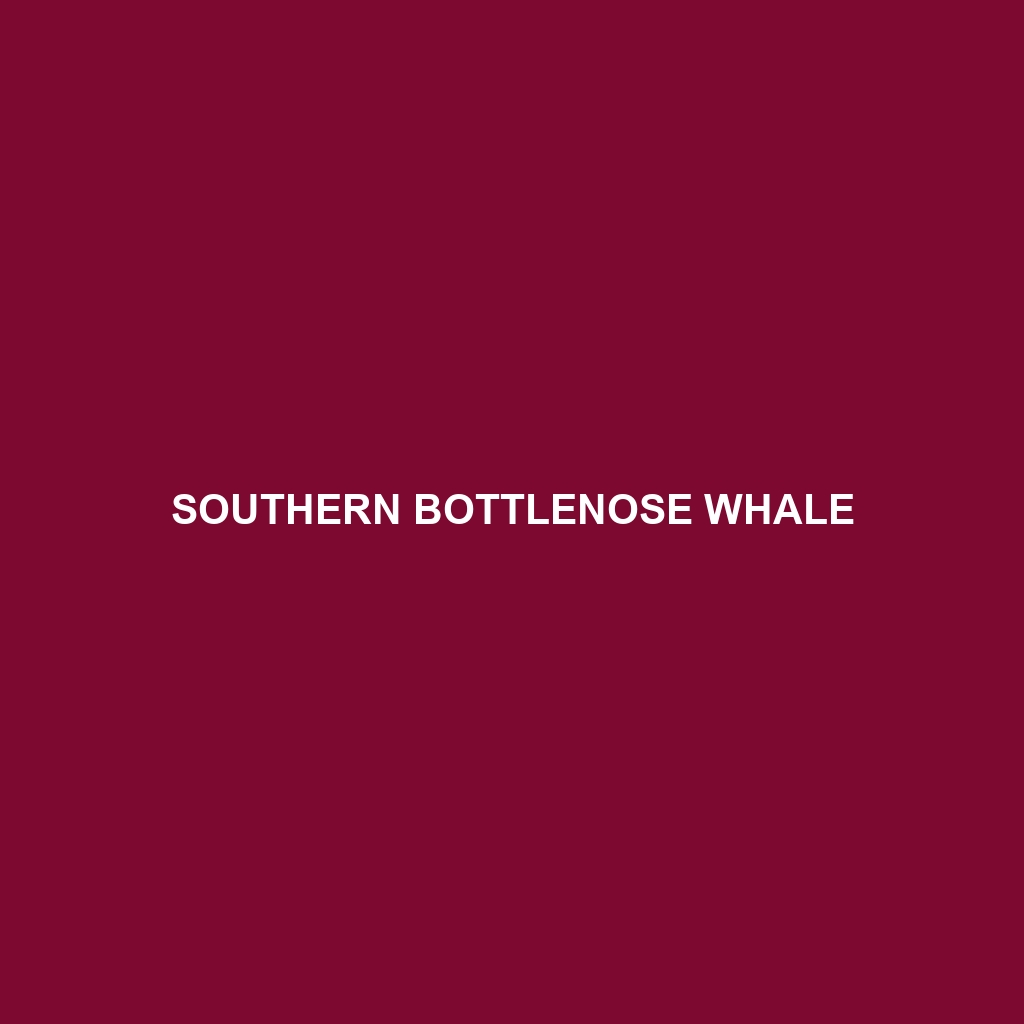Southern Bottlenose Whale
Common Name: Southern Bottlenose Whale
Scientific Name: Hyperoodon planifrons
Habitat
The Southern Bottlenose Whale primarily inhabits deep, temperate waters of the Southern Hemisphere. They are often found in oceanic regions near the continental slope, particularly around Antarctica, New Zealand, and South America. These whales favor areas with deep waters, which provide an ideal environment for their feeding habits.
Physical Characteristics
Southern Bottlenose Whales are known for their impressive size, reaching lengths of up to 12 meters (39 feet). Their bodies are robust and streamlined, typically featuring a dark gray to light gray coloration, often lighter on the underside. A distinctive feature is their large, bulbous forehead, termed the “melon,” which plays a role in echolocation. Their flippers are short and their dorsal fin is small and positioned far back, making them easily identifiable.
Behavior
These whales exhibit fascinating behaviors, including solitary swimming or traveling in small pods, typically consisting of 2 to 10 individuals. Southern Bottlenose Whales are known for their acrobatic displays, such as breaching and spyhopping, which can attract attention from researchers and enthusiasts alike. They are also known to perform for not only their pod members but occasionally for boats, revealing their curiosity.
Diet
The diet of the Southern Bottlenose Whale mainly consists of squid, fish, and crustaceans. This species employs deep diving techniques to hunt, staying submerged for up to 45 minutes. Their foraging strategy often involves echolocation, allowing them to detect prey in the dark depths of the ocean.
Reproduction
Reproductive habits of the Southern Bottlenose Whale indicate that breeding tends to occur in warmer months, often with a peak in summer. After a gestation period of about 12-13 months, calves are born, measuring around 3-4 meters (10-13 feet) in length. Maternal care is significant, with mothers nursing their calves for up to a year, teaching them essential survival skills.
Conservation Status
The current conservation status of the Southern Bottlenose Whale is classified as Data Deficient by the IUCN. Their populations are vulnerable due to threats such as climate change, entanglement in fishing gear, and potential impacts from shipping activities. Conservation efforts are necessary to protect this species and its natural habitat.
Interesting Facts
Southern Bottlenose Whales are among the less-studied species of whales, providing a unique opportunity for researchers. Their ability to dive to depths of over 1,000 meters (3,280 feet) makes them one of the deepest divers among whale species. Fascinatingly, these whales also exhibit unique social behaviors, including vocalizations that can vary significantly from pod to pod.
Role in Ecosystem
In the marine ecosystem, the Southern Bottlenose Whale plays an essential role as a top predator. By feeding on squid and fish, they help maintain the balance of marine populations, which in turn supports the health of oceanic environments. Their presence indicates a balanced ecosystem, and their interactions with other marine species contribute to the intricate web of life beneath the waves.
